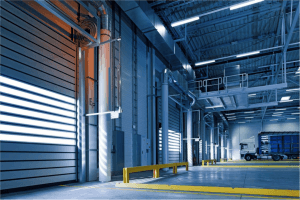LED Lighting for Indoor Food Storage
By Leah • Jul 24, 2018
We already brought to you the benefits of LED lighting for food processing plants. However, once the food leaves the facility, it doesn't mean our considerations for hygiene, general safety and energy efficiency leave with it. Once the food is made, storage solutions bring up their own lighting issues we need to consider. Fortunately, OEO lighting has the key to these food storage solutions and more.
What Type of Food are you Storing?
First, if you are considering updating your lighting system to LED, deciding on the right product means knowing your lighting needs. By answering what type of food you are storing, you will be able to help direct yourself to the right fittings.
Unlike many non-food products which can withstand a range of temperatures, perishable food has very specific safety concerns. This is because when cold food goes over a certain temperature, bacteria will start to form and replicate. Serious strains of bacteria such as E. coli and different strains of Clostridium which can lead to such diseases as botulism.
How Does Lighting Affect Temperature?
Any form of lighting requires energy to power them. In the form of most lighting systems, electricity from the grid enters the bulb to power it. However, not all of this energy is released as light. Some of it is released as other types of energy such as heat. How much heat depends on the type of bulb.
High intensity discharge light bulbs are notorious for the amount of energy they waste as heat output. Compact florescent lights came along and proved more efficient, but even they can't compare when it comes to LED lighting. As our LED lights are up to 80% more efficient than HID bulbs, not only do they give out a much smaller percentage of heat, they require a fraction of the energy.
When you have an indoor cold or frozen food storage, your refrigeration units are going to use a lot of energy to keep this temperature low. By adding significantly less heat, LED bulbs won't add strain to the refrigeration system and will be much more cost effective overall.
You may also need fresh food to be kept at different temperatures and what LED bulbs offer is much more controllability. You can preset your requirements and ensure ambient temperatures are well maintained. Food generally isn't stored at hot temperatures except at the point of purchase or distribution (e.g. restaurants or supermarkets). If they were, the durability of LED fixtures would be able to take it and their energy efficiency will still save you money in the long run.

Other Food Safety Concerns
The type of food also has other safety considerations which LED lighting can assist. If there is a lot of wet food, LED lighting's sturdy casings and lack of popping will help ensure there are no nasty surprises when the food eventually goes to table.
While food is consumable, its distribution can lead to issues with atmospheric pollution. If you have large grain storage, then you can have detritus which goes into the storage space. This can get into the fixtures and damage other bulbs. With LED lighting, their compact nature means they will last much longer and their durability means they won't short as easily as other bulbs.
With our no risk trials, we can send you our bulbs so that you can see for yourself how LED lighting can benefit your industry, whether food storage or otherwise.
